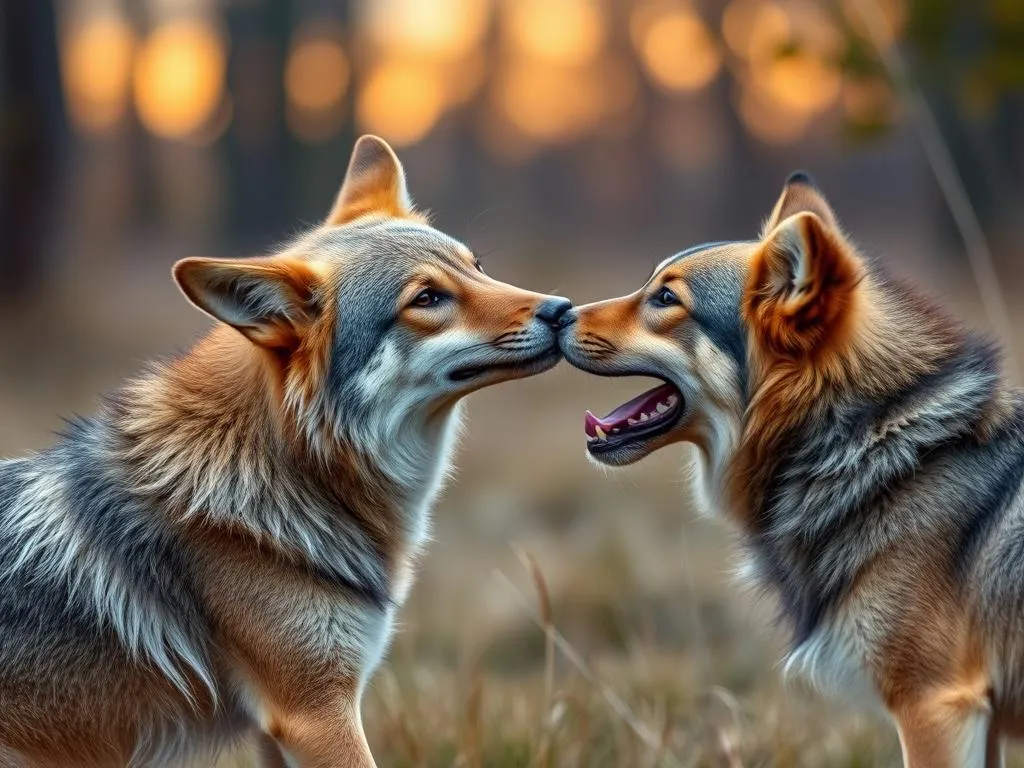
Coyotes and dogs share a fascinating relationship that has intrigued humans for centuries. Both belong to the Canidae family, yet they exhibit distinct traits and behaviors that set them apart. Understanding the differences and similarities between coyote vs dog is crucial for pet owners, wildlife enthusiasts, and anyone interested in the natural world. This exploration will delve into their classification, physical characteristics, behaviors, habitats, interactions, cultural significance, and ethical considerations, providing a comprehensive view of these two remarkable animals.
Overview of Coyotes and Dogs
Definition and Classification
Coyotes, scientifically known as Canis latrans, are wild canids native to North America. They are adaptable animals that thrive in various environments, from deserts to forests and even urban areas. With a history spanning thousands of years, coyotes have evolved to become skilled hunters and survivors in the wild.
In contrast, dogs (Canis lupus familiaris) are domesticated descendants of wolves. Their domestication began around 15,000 years ago, resulting in a wide variety of breeds tailored for specific purposes, from companionship to herding. Both species share a common ancestor, yet their paths diverged significantly through natural selection and human intervention.
Physical Characteristics
When comparing coyote vs dog, notable differences in physical characteristics become apparent:
-
Size and Weight: Coyotes generally weigh between 24 to 46 pounds and stand about 21 to 24 inches tall at the shoulder. In contrast, dogs vary greatly in size, with breeds ranging from tiny Chihuahuas to large Great Danes, which can weigh upwards of 150 pounds.
-
Fur Color and Texture: Coyotes typically have a mix of gray, brown, and black fur, providing them with excellent camouflage in their natural habitats. Dogs, however, come in an array of colors and patterns, reflecting the diversity bred into them by humans.
-
Distinctive Features: Coyotes have pointed ears, a bushy tail, and longer legs compared to most domestic dogs. Dogs exhibit a wide range of ear shapes, tail types, and physical features, depending on their breed.
Behavioral Differences
Social Structure
The social structures of coyotes and dogs reflect their lifestyles. Coyotes often hunt and live in family groups called packs, which typically consist of a mated pair and their offspring. They engage in cooperative hunting and exhibit complex social behaviors and vocalizations to communicate with one another.
Dogs, on the other hand, have adapted to a more intimate social structure with humans. Their social behaviors include loyalty and attachment to their owners, which is a result of thousands of years of domestication. While some dog breeds retain pack instincts and can thrive in multi-dog households, their primary social bond is with their human guardians.
Hunting and Feeding Habits
In the wild, coyotes are opportunistic hunters and scavengers. They primarily prey on small mammals such as rabbits, rodents, and birds, but they are also known to eat fruits and insects when necessary. Their hunting techniques vary; they often hunt alone or in pairs, using stealth and speed to capture their prey.
Dogs, being domesticated, have a vastly different relationship with food. Most dogs are fed a diet formulated by their owners, tailored to their health needs and preferences. While some breeds retain hunting instincts, such as terriers and hounds, they generally rely on humans for sustenance, and their feeding habits are significantly less aggressive than those of coyotes.
Territoriality and Instincts
Coyotes are highly territorial and mark their territory with urine and vocalizations to ward off intruders. Their instincts drive them to defend their territory fiercely, especially during the breeding season.
Dogs, in contrast, may exhibit territorial behaviors, but these are often less pronounced. While they can be protective of their homes and families, their loyalty to humans often supersedes their instinctual need to defend territory. This loyalty manifests in various ways, including affection and companionship.
Habitat and Lifestyle
Natural Habitat of Coyotes
Coyotes are highly adaptable creatures that thrive in diverse environments. They can be found in forests, grasslands, mountains, and deserts. Their ability to adapt to urban areas has led to increased interactions with humans, often causing concern among residents. Coyotes use urban settings to find food sources and shelter, showcasing their resilience and adaptability.
Domestic Environment of Dogs
Dogs are primarily found in human-created environments, where they live in homes, backyards, and parks. Their domestication means they rely on humans for food, shelter, and companionship. The importance of human interaction cannot be overstated; dogs thrive in environments where they receive love, care, and socialization.
The lifestyle of a dog is often dictated by its owner’s routines, making them unique companions that adapt their behavior to suit human lifestyles.
Interactions Between Coyotes and Dogs
Encounters in the Wild
As urban areas expand into coyote habitats, encounters between pet dogs and wild coyotes have become more common. These encounters can pose risks to both parties. Coyotes may view small dogs as prey, while dogs may instinctively chase or provoke coyotes.
Dog owners in areas with coyote populations should take precautions to ensure their pets’ safety. This includes keeping dogs leashed during walks, supervising outdoor playtime, and avoiding letting pets roam freely, especially at dawn or dusk when coyotes are most active.
Hybridization and Genetic Differences
The phenomenon of coyote-dog hybrids, often referred to as “coydogs,” occurs when coyotes and domestic dogs mate. These hybrids can exhibit traits from both species, leading to a mix of physical characteristics and behaviors.
While hybridization can contribute to genetic diversity, it also raises concerns about the potential impact on local coyote populations and ecosystems. Understanding these genetic differences is crucial for wildlife management and conservation efforts.
Cultural Significance and Perceptions
Myths and Folklore
Throughout history, coyotes have held a significant place in various cultures’ myths and folklore. Often depicted as tricksters, coyotes are featured in Native American stories as clever and resourceful beings. Their adaptability and survival skills are celebrated in many tales.
Conversely, dogs have long been viewed as symbols of loyalty, companionship, and protection across cultures. They play vital roles in folklore as guardians and helpers, embodying the strong bond between humans and animals.
Modern Perceptions
In contemporary society, perceptions of coyotes can vary widely. While some view them as pests or threats to pets and livestock, others appreciate their role in the ecosystem as natural predators. They are often subjects of wildlife management discussions, as urban encroachment continues to challenge their habitats.
On the other hand, dogs are predominantly seen as beloved companions and service animals. Their roles in families and communities are celebrated, reflecting the deep emotional connections humans have forged with them over the years.
Ethical Considerations
Wildlife Conservation
Understanding coyotes is essential for effective wildlife management and conservation efforts. Addressing human-wildlife conflict requires a nuanced approach that considers the ecological role of coyotes and the importance of preserving their habitats. Promoting coexistence strategies can help mitigate negative interactions and foster a greater appreciation for wildlife.
Pet Responsibility
With the joy of dog ownership comes the responsibility of ethical care. Prospective dog owners should consider adopting pets from shelters or rescues, as this helps combat the overpopulation crisis and provides homes for animals in need. Responsible pet ownership includes proper training, socialization, and healthcare, ensuring that dogs are happy and healthy companions.
Conclusion
Understanding the differences and similarities between coyote vs dog enriches our knowledge of both wildlife and domesticated animals. From their classification and physical characteristics to their behaviors and cultural significance, both species offer unique insights into the natural world.
This knowledge is not only beneficial for potential pet owners but also fosters a deeper appreciation for the delicate balance between humans and wildlife. By recognizing the value of both coyotes and dogs, we can make informed decisions about our lifestyles and our interactions with the natural world.
The journey into the lives of these remarkable animals encourages us to coexist harmoniously with nature while cherishing the companionship of our beloved pets.









